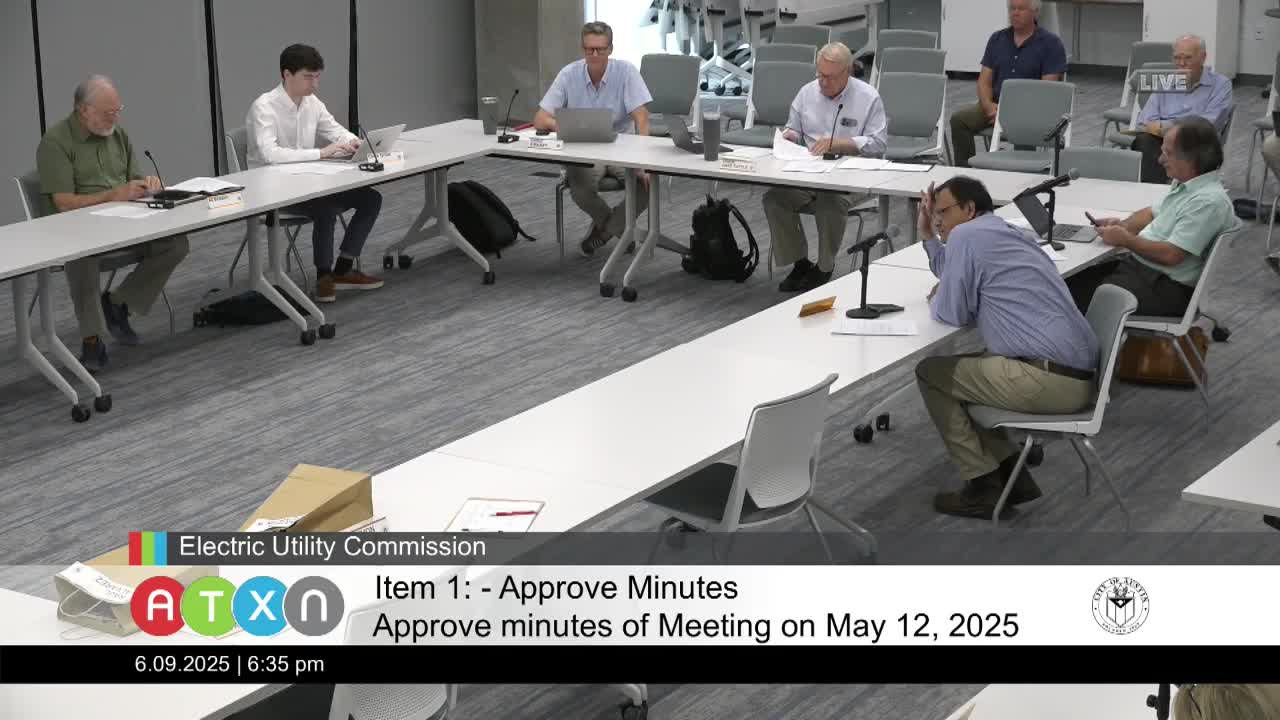Commissioner Alvarez reviews Austin's green building program impact since 1991
June 09, 2025 | Austin, Travis County, Texas
This article was created by AI summarizing key points discussed. AI makes mistakes, so for full details and context, please refer to the video of the full meeting. Please report any errors so we can fix them. Report an error »

Austin's Electric Utility Commission recently highlighted the significant impact of the city's Green Building Program, which has been in operation since 1991. The program, initially launched with a Department of Energy grant, has evolved to encompass a comprehensive sustainability initiative aimed at enhancing conservation and sustainability goals across the community.
During the meeting, staff provided an overview of the program's structure, which includes a rating system for single-family, multifamily, and commercial buildings. This system offers a 1 to 5 star rating based on sustainability practices, encouraging builders to adopt environmentally friendly methods. The program also emphasizes education and outreach, targeting both the general public and industry professionals to foster demand for sustainable building practices.
The Green Building Program has made substantial strides, with over 20,000 single-family homes, nearly 250 multifamily developments, and approximately 400 commercial projects rated since its inception. Participation is incentivized through zoning agreements, requiring certain developments to achieve specific green building ratings to qualify for planned unit development zoning.
The commission noted that the program not only contributes to energy savings but also aligns with broader city initiatives, such as the Climate Equity Plan and the Zero Waste Plan. These policies guide the development of best practices that address various quality-of-life issues, including indoor air quality and construction worker safety.
As the program continues to adapt, updates to the rating criteria occur approximately every three years, ensuring alignment with current technologies and building codes. This ongoing evolution reflects the city's commitment to sustainability and its goal of becoming a leader in green building practices.
The meeting concluded with discussions on the voluntary nature of the program, emphasizing that while certain developments must meet specific ratings, builders have flexibility in how they achieve these standards. This approach aims to balance regulatory requirements with the need for innovation in sustainable construction.
During the meeting, staff provided an overview of the program's structure, which includes a rating system for single-family, multifamily, and commercial buildings. This system offers a 1 to 5 star rating based on sustainability practices, encouraging builders to adopt environmentally friendly methods. The program also emphasizes education and outreach, targeting both the general public and industry professionals to foster demand for sustainable building practices.
The Green Building Program has made substantial strides, with over 20,000 single-family homes, nearly 250 multifamily developments, and approximately 400 commercial projects rated since its inception. Participation is incentivized through zoning agreements, requiring certain developments to achieve specific green building ratings to qualify for planned unit development zoning.
The commission noted that the program not only contributes to energy savings but also aligns with broader city initiatives, such as the Climate Equity Plan and the Zero Waste Plan. These policies guide the development of best practices that address various quality-of-life issues, including indoor air quality and construction worker safety.
As the program continues to adapt, updates to the rating criteria occur approximately every three years, ensuring alignment with current technologies and building codes. This ongoing evolution reflects the city's commitment to sustainability and its goal of becoming a leader in green building practices.
The meeting concluded with discussions on the voluntary nature of the program, emphasizing that while certain developments must meet specific ratings, builders have flexibility in how they achieve these standards. This approach aims to balance regulatory requirements with the need for innovation in sustainable construction.
View full meeting
This article is based on a recent meeting—watch the full video and explore the complete transcript for deeper insights into the discussion.
View full meeting
